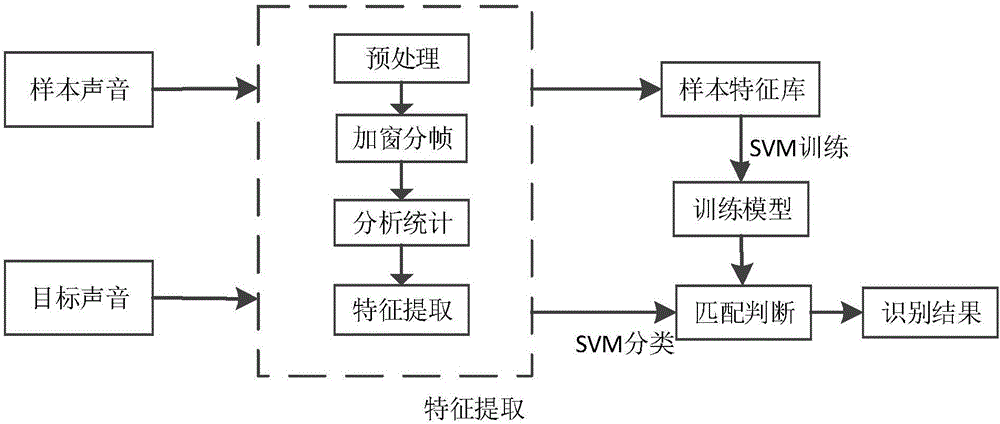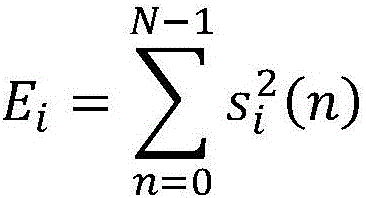Natural environment sound recognition method based on time-frequency domain statistical feature extraction
A statistical feature and natural environment technology, applied in speech recognition, speech analysis, instruments, etc., can solve the problems that the natural environment sound cannot be fully applied, and the sound signal cannot be accurately described.
- Summary
- Abstract
- Description
- Claims
- Application Information
AI Technical Summary
Problems solved by technology
Method used
Image
Examples
Embodiment Construction
[0048] The following specific embodiments are combined to describe the present invention in detail, and the following description is only for demonstration and explanation, and does not limit the present invention in any form.
[0049] Such as figure 1 and 2 As shown, based on the natural environment sound (such as: engine sound, car horn sound, building construction sound, speech) recognition method based on the time-frequency domain statistical feature extraction, the steps of the specific implementation mode are as follows:
[0050] Step 1. Set the sampling frequency to f s The sound collection device is placed at different distances from the sound source point, collects the sound of each type of natural environment multiple times, and calibrates the type of sound as a sound sample library.
[0051] Step 2. Preprocess the sound sample, filter out low-frequency interference signals below 50Hz through a high-pass filter, and then divide the sound into frames for one second,...
PUM
 Login to View More
Login to View More Abstract
Description
Claims
Application Information
 Login to View More
Login to View More - R&D
- Intellectual Property
- Life Sciences
- Materials
- Tech Scout
- Unparalleled Data Quality
- Higher Quality Content
- 60% Fewer Hallucinations
Browse by: Latest US Patents, China's latest patents, Technical Efficacy Thesaurus, Application Domain, Technology Topic, Popular Technical Reports.
© 2025 PatSnap. All rights reserved.Legal|Privacy policy|Modern Slavery Act Transparency Statement|Sitemap|About US| Contact US: help@patsnap.com



